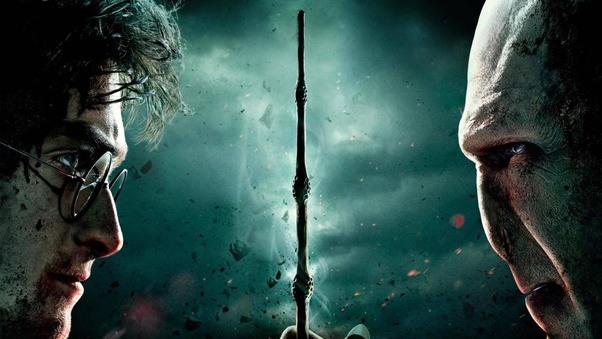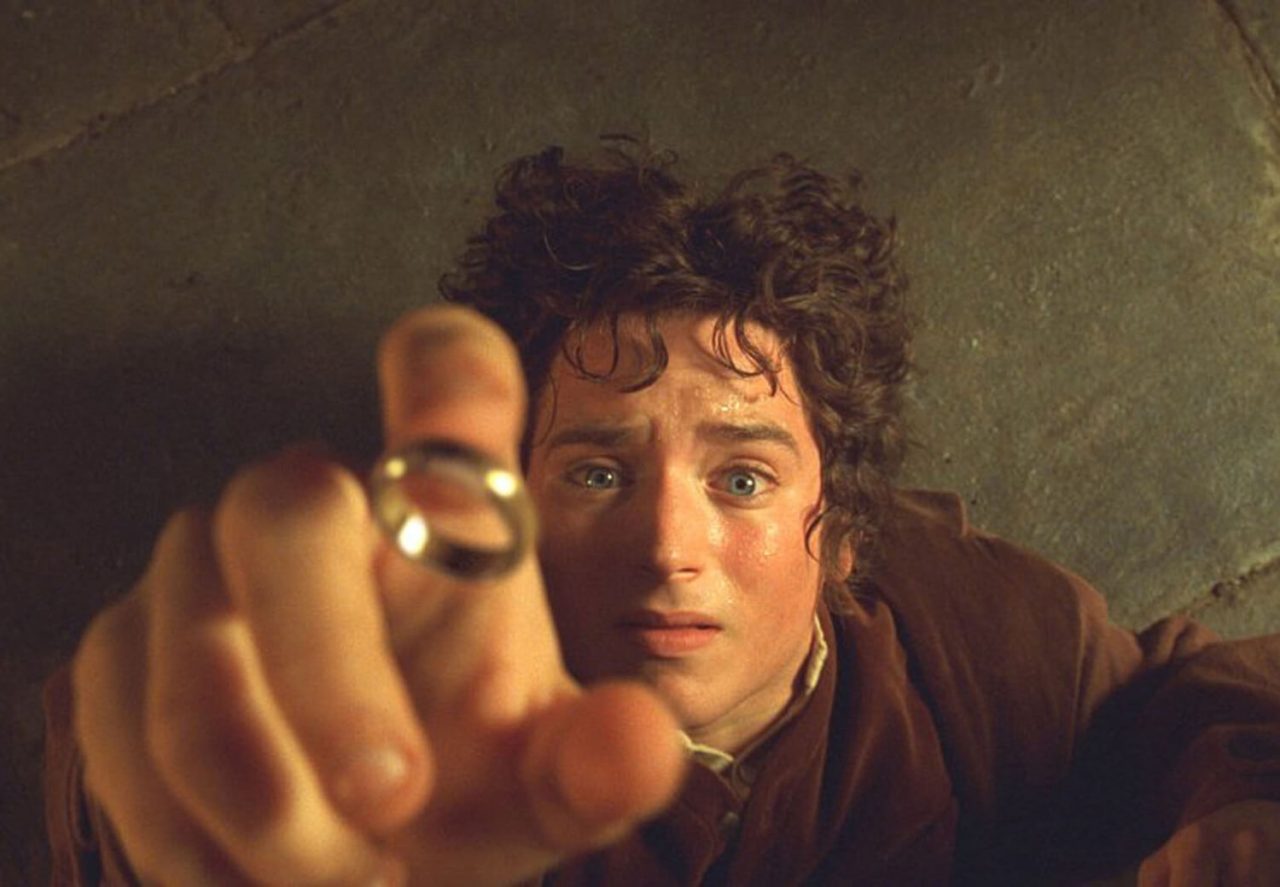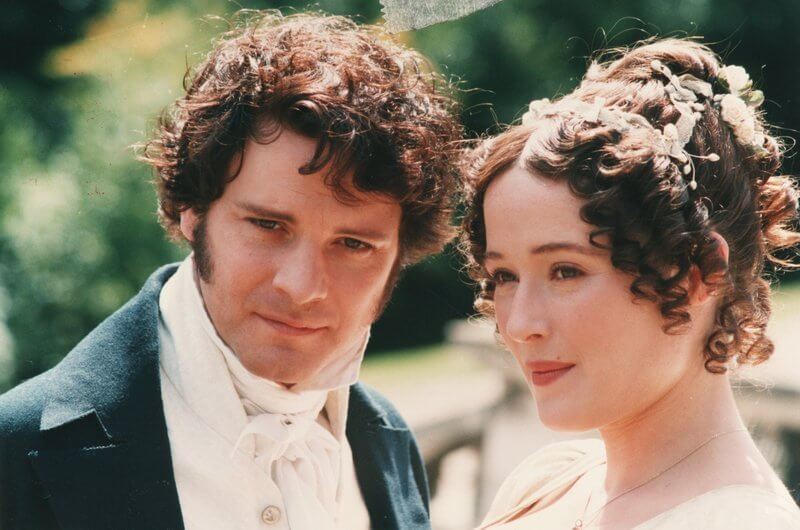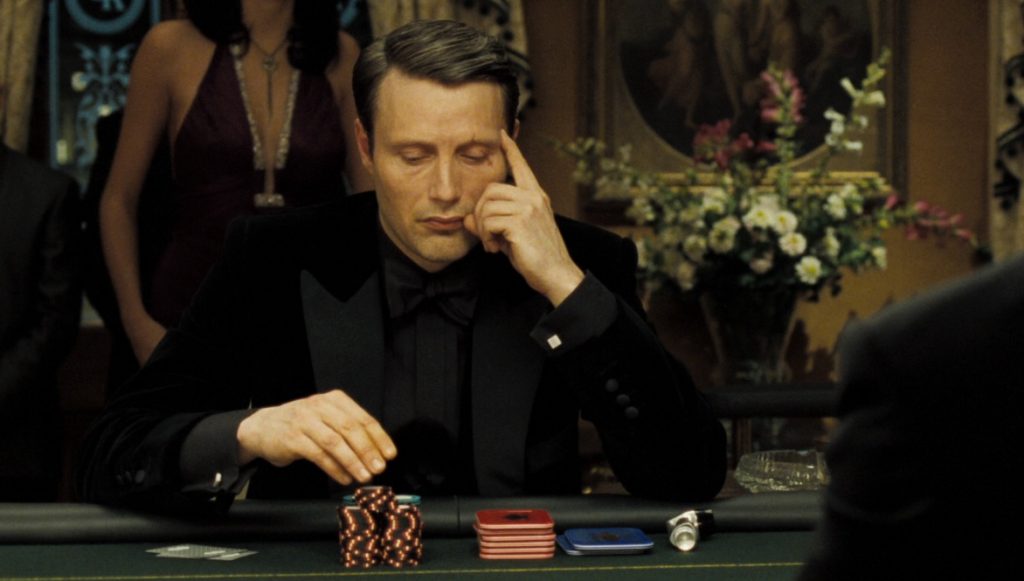How To Create Personality For A Character
For any novel to truly connect with readers, the author needs to pay close attention to character development. Even if you're writing an action-packed, plot-driven book where the characters are robots, it's the human element that will resonate with readers.
Say you're choosing between two books for your next read. The first recounts a voyage to a newly discovered planet. The second stars a lifelong space traveler on a journey to a faraway world. He was born on the ship and he'll die there, never setting foot on Earth and never reaching the planet for which he's charted his course. Once the ship lands, it'll be his children who get to alight on that new ground — not him.
These two books share the basic concept of space travel, which might intrigue you from the get-go. But in the second one, you catch a glimpse of a protagonist juggling an intriguing set of practical and psychological issues: someone whose personal journey will grab you. If his character development is handled with subtlety and depth, he could elevate the book from a basic sci-fi release to a genre classic.
This article will show you how to develop a character who will linger in your readers' minds long after they turn the last page. To write such a character, you'll need to:
- Justify the character's reason for existence by establishing the character's story goal and motivation
- Make sure the character has both strengths and flaws
- Give the character an external and internal conflict
- Decide whether the character is static or dynamic
- Give the character a backstory
- Develop the character's external characteristics to make them distinguishable
- Make the character stand out with distinctive mannerisms
- Do your research to make the character believable
- Steer clear the biggest character development mistake
Every step helps you build a character's depth, from the inside out. By the end of this process, you should emerge with a fully realized, multidimensional character. Don't worry — we'll take you through each stage in this post in order to get you there.
Let's start with internal character development. You can think of internal character development as a concentric circle, radiating outward from your character's fundamental goals and motivations. All the other characterization choices you make, from their backstory to how much they change over time, will flow from these two core elements.
1. Establish the character's story goals and motivations
Your character's current goal is why the story exists — and why it's worth telling. It's what your character wants from the book's plot, and what will propel their inner journey. Without it, the overall narrative arc would fall totally flat.
Let's look at a few character goal examples:
- Harry Potter's goal is to defeat Lord Voldemort
- Bilbo's goal is to help the dwarves reclaim the kingdom of Erebor
- Hamlet's goal is to avenge his murdered father

Then, there are the motivations for your character's goal, the 'in order to' that gives it meaning. What internal and external influences drive their desires? There can, of course, but more than one. For instance:
- Harry Potter's goal is to defeat Voldemort... in order to ensure the safety of wizarding world — and to find closure from the murder of his parents.
- Bilbo's goal is to help the dwarves reclaim the kingdom of Erebor... in order to bring some adventure to his life of creature comforts — and to impart his sense of home and belonging to those without a home.
- Hamlet's goal is to avenge his murdered father... in order to prove he's not imagining the ghost who haunts him — and to demonstrate that he's capable of acting decisively.
If you're struggling to nail down your character's goal, try asking, "What would make the character feel happy or satisfied with their life?" This is their motivation. Next, ask yourself, "What could they do to obtain that happiness?" This is their goal.
If you're struggling to get to the crux of your character's motivations, try playing the "why" game. This will help you develop a multilayered chain of motivations:
If your character's goal is to connect with their long-lost sibling, their motivation might be because they are an only child who always longed for a brother or sister. Why? Because they felt lonely as a child. Why? Because their parents moved around a lot and they had trouble keeping friends? Why? Because they eventually got tired of getting close to people, only to say goodbye.
By playing this game to its logical conclusion, we've learned that the character wants to meet their long-lost sibling [goal] because they feel it will establish a bond stronger than geography [motivation].
Develop characters by establishing goals and motivations. Ask yourself:
- What is their goal?
- What are their specific motivations?
- What are they willing to risk to achieve their goal?
- What would happen if they simply can't achieve their goal?
2. Give the character an external and internal conflict
Your character only becomes interesting when you put a few obstacles between them and their goal. If Frodo walked on up to Mount Doom, dropped the ring in the lava, and made it back in time for second breakfast, it wouldn't make for a very compelling story or a very memorable protagonist. It's the obstacles — the army of orcs commanded by Sauron and the power the ring has over Frodo, to name a couple — that create conflict and tension in the story. And that's what makes it worth reading.

You'll notice in the example above that we mention two conflicts. One is Frodo vs. Sauron (character vs. character), and the second is Frodo vs. himself — his struggle to not lose himself to the ring. All characters should undergo an internal conflict that makes them question themselves and mirrors the external conflict they're facing. Even static characters who do not significantly alter over the course of the novel will face an internal conflict — you can find Sherlock vs. self, for example, in his fraught attempts to communicate with people.
🖊️
Which famous author do you write like?
Find out which literary luminary is your stylistic soulmate. Takes one minute!
Reedsy identifies six primary types of conflict in fiction. While you are developing your character, you should decide which one(s) will make for the most worthy adversaries. The six types are Character versus...
Character. For example, Othello vs. Iago.
Society. For example, Winston Smith vs. Big Brother in 1984.
Nature. For example, Robert Neville vs. the virus in I Am Legend.
Technology. Victor Frankenstein vs. Frankenstein's monster.
Supernatural. Jack Torrance vs. The Overlook in The Shining.
Self. Every compelling protagonist faces some conflict of the self, but a few examples include Jason Bourne vs. his own past, Harry Goldfarb vs. addiction in Requiem for a Dream, and Bridget Jones vs. self-doubt.
Develop characters through conflict. Ask yourself:
- What internal conflict will your protagonist face?
- Will they also face an external conflict? How will the internal and external mirror each other?
- How will the conflict(s) affect the characters' pursuit of their goals?
Free course: Character Development
Create fascinating characters that your readers will love... or love to hate! Get started now.
3. Make sure the character has strengths and flaws
All the intrigue in your story will flow from how your character responds to their external and internal conflicts. In facing these challenges, your character will need both strengths to draw upon and flaws that threaten to drag them down.
The iconic characters we know and love tend to have a nuanced mix of positive and negative traits. Harry Potter, for instance, is brave and loyal. But he's also stubborn and reckless, flaws that have put himself — and his friends — in danger. Frodo, meanwhile, is selfless enough to take on a thankless and dangerous mission. But he's also highly dependent on the protection of his allies, and very vulnerable to the ring's seductive pull.
To give your adoring fans something to root for, your character should be plausibly able to overcome the challenges the plot throws at them, destroying the ring or saving the wizarding world. At the same time, you need to keep your readers on the edge of their seats. That's why there should be a real risk that your character will fail — fall prey to the ring's power at the very edge of Mt. Doom, or die in a burst of green light from the Dark Lord's wand.
Writing a character with both strengths and flaws will help you maintain the tension in your plotting, but that's not all it does— it's also crucial to making your readers feel for the people at the heart of your story.
Your character's strengths — whether that's their sparkling wit, their skill at wind magic, or their unwavering moral center — will get readers to root for them, admire them, maybe even swoon over them. But don't forget your character's flaws: say, their recklessness, their greedy streak, the insecurity that makes them lash out at their more accomplished sibling. These very human weaknesses will make them relatable.
Not sure which flaws to give your characters? Check out this list of 70 fascinating character flaws to hit upon the perfect combination!
4. Decide whether the character is static or dynamic
There's a myth that characters have to fundamentally change over the course of a story — in other words, be dynamic — in order to be considered well-written. But the truth is, there are a host of great characters who emerge from a long internal journey without changing very much at all. These are static characters, and they're an absolutely valid part of your character development repertoire.
Let's dig a little deeper into the idea of static characters versus dynamic characters.
Characters who don't change because that's just who they are
Captain America, Captain Nemo, and Sherlock Holmes are a few examples of characters who do not significantly alter over the course of the novel. In the case of Sherlock, it is his unchanging nature that makes him a compelling character. Unlike many of us, he does not feel the need to adapt to his surroundings. For Sherlock, that's both a strength and a flaw: he is always true to himself, but he often fails to learn from his experiences. This is a "traditional" static character.
Characters who undergo substantial change
A dynamic character is altered by the conflict(s) that they face. This might be a subconscious change, such as Jack adapting to the island in Lord of the Flies by becoming as wild, unconstrained, and "savage" as the nature around him. Or the change might be more of a conscious decision, such as Elizabeth Bennet and Mr. Darcy overcoming their obstinate pride and prejudice for the sake of love. This is a "traditional" dynamic character.
Characters who don't change in order to effect change in the world around them
Writers often rely on complex, fast-paced plots with lots of external conflict in order to compensate for static protagonists. The world around them may try to shift these protagonists from their core principles, but they will rebel in order to try and alter their circumstances. This kind of character is both a little bit static and a little bit dynamic: even though they might not change much themselves, they're the cause of major change. A great example of this kind of protagonist is Katniss Everdeen from the Hunger Games. You can read about all about her unique characterization in our post on dynamic characters.

Reinforcing your protagonist through secondary characters
Often times, authors write static secondary characters to act as pillars around which a dynamic character can develop. Think of Atticus Finch from To Kill a Mockingbird: he changes little throughout the course of the novel. But it is his steadfast belief in justice that allows Scout to evolve from an innocent child into a girl with a strong sense of right and wrong.
You might want to consider writing a foil character: a character who contrasts with the protagonist in order to highlight particular qualities of the main character. For instance, Harry Potter's foil is Draco Malfoy: privileged where Harry is scrappy, self-interested where Harry is recklessly selfless.
Develop characters by determining the shape of their arc. Ask yourself:
- How much will they change?
- What inspires their change?
- Do they change for the better?
- Do they change for the worse?
- Do they change the world and/or people around them?
5. Give the character a past
Just as your history has contributed to the person you are today, your character's history has made them into the person we see on the page. You should develop your character's past as much as possible, but it's especially important to create and zero in on memories that inform exactly what we see in the story.
Develop characters through their history. Ask yourself:
- What moments from their past have played a pivotal role in who they are now?
- Do they have any suppressed memories?
- What are some of their happiest memories?
6. Develop the character's physical characteristics
Yes, the internal goals and motivations are the "heart" of a character. But that doesn't mean that their external characteristics should just be an afterthought. Sure, the fact that your protagonist has blonde hair may not impact the plot. But it may color how other characters respond to them. And it can only benefit you, as the author, to have a detailed image of them in your mind as you write your story.
Early in your character development, put a bit of time into sketching out your protagonist's physical features, including their...
- Appearance: What do they look like? Does their appearance play a role in the story?
- Voice: What do they sound like? Do they speak with an accent, or an unusual cadence? Does their voice appear to "match" their appearance?
To help give yourself a more holistic image of your character, check out our ready-made character profile template. It will prompt you to define external elements like posture and distinguishing features, in addition to internal elements like their relationship with their mother and how they want to be remembered after they die.
If you prefer to keep your character notes organized online, you can check out the character builder tool over at One Stop for Writers. It's a super-thorough guide to character creation that prompts you to fill out their backstory, personality, and other details that contribute to their overall character arc. (You'll need a subscription to access the tool, but trust us that it's worth it.)
Want to see how the greats build their characters' dialogue? Check out 15 passages of great dialogue, analyzed.
7. Make the character stand out with distinctive mannerisms
Figuring out your character's external traits doesn't stop at deciding on an eye color and a voice type. To make your brown-eyed alto stand out from all the other brown-eyed altos in the literary canon, you'll want to round out that physical profile with some distinctive mannerisms. After all, a character's physicality takes so much more than describing their body in isolation. It's about how they move through space — and about how they interact with everything around them, from objects to other characters.
You'll want to reflect on how your character responds to the world around them, including their….
- Communication style: How do they interact with others, and how does that shape their relationships? Does their speech have any idiosyncracies or quirks?
- Gait: How do they make their way around their environment, and how does this impact how they're treated? Do crowds unconsciously gather to watch their fluid, graceful strides, or do others give them a wide berth because their heavy tread is intimidating?
- Tics: What do they do when they're nervous, uncertain of how to proceed, or about to collapse from exhaustion?
Some character mannerisms will be situationally dependent, coming out only when they're acting under the compulsion of some strong emotion. Harry Potter, for example, understandably rubs his forehead when his scar hurts. Similarly, Nynaeve from the Wheel of Time series tends to tug on her braid when she's agitated, and James Bond villain Le Chiffre, from Casino Royale, puts his finger to his temple when he lies or bluffs.

Other mannerisms, however, are part of a character's default state — as essential to our view of them as their coloring. Just think of Draco Malfoy's permanent sneer: it's as much a part of him as his pale blond hair.
To make your character truly memorable, you'll want to consider adding both these types of mannerisms to their behavioral repertoire. Anger shouldn't look the same on everyone: someone might flare up like an inferno, going red in the face, while others turn icily polite, smiling insincerely.
🎵
Tell us about your book, and we'll give you a writing playlist
It'll only take a minute!
8. Do your research to make the character believable
When it comes to character development, empathy and imagination will take you far. After all, you can't expect your readers to get into your protagonist's head if you're not able to think your way there.
But say you want to craft characters so lifelike they seem more flesh than sentence, capable of walking right out of the pages and moving around without the puppet-strings of your plot tugging on their limbs. Then you'll want to go beyond the limits of your mind — and do some character research.
Character research comes into play when you're writing about an aspect of your character that you don't know much about off the top of your head. For instance, say you're writing a British character when you've never set foot outside of Florida. You'll want to do a bit of research when you're scripting his dialogue.
You absolutely don't want to pepper your British character's speech with American regionalisms. But you also don't want to him sound like the wrong sort of Brit — he shouldn't talk like a posh Oxonian if he's supposed to be a working class guy from Croydon. Your character's dialogue has to fit the background you've given him, and that requires some research.
Now, how do you go about that? Luckily, character research doesn't have to feel like you're cranking out a paper for school — it can be a lot more experiential and quirky in its methods. You can Google "croydon slang" and read the articles that come up, or hit up your library for some books on linguistic ethnography. But you could also watch some British-made TV set in your character's hometown.. You could even find some YouTubers from the area.
Note that research is especially important if you're writing a character whose identity or experiences differ substantially from your own — say, someone from a different ethnic background, or someone with a mental illness you've only read about.
In that case, your research should start with reading. In addition to looking at the facts — whether that's an article on Chicano culture, or a clinical description of depression symptoms — consider seeking out some memoirs and personal essays by writers in the relevant demographic. In addition, you might consider engaging the services of a sensitivity reader. Think of them as research assistants, committed to making your character development as authentic and nuanced as possible.
9. Steer clear the biggest character development mistake
By now, you'll have built up a character from the inside out, moving from the goals and motivations that define their role in the story to the mannerisms that make them stand out from the crowd.
Congratulations! You're well on your way to giving your story an unforgettable human element. But your job isn't over just yet. Now, you have to make sure you aren't making the biggest character development mistake of all: making your character too perfect.
We talked about giving strength and flaws before, so you might think you're covered. Your character might be a heroic warrior who earns the well-deserved respect of her community, but she's totally got some weaknesses too!
You might very well be in the clear. But the key now is to make sure that your character's strengths and flaws are well-balanced. You don't need to counter every positive characteristic with an equal and opposite weak point. But you do want to make sure your character has some flaws that are just as consequential as their strengths.
Say your protagonist is a gorgeous, violet-eyed sylph with a heart of gold, who fights like Mike Tyson and writes like Mark Twain… but she sings like a squawking parrot and once got a B- in math. Sure, her tone deafness and mathematical ineptitude are technically flaws. But all in all, they're pretty inconsequential.
If your character has only a couple of minor weaknesses to balance out their tremendous strengths, they'll still read as unrealistically perfect. Watching them dazzle their way through your story will have your readers rolling their eyes — or even worse, suspecting you wrote them as a wish fulfillment exercise.
So make sure your character has some meatier flaws, the kind of vulnerabilities that will actually play a role in her character arc. Maybe your violet-eyed heroine is brave and strong, but she tends to panic when the stakes are high, making tactical mistakes that can cost her dearly. Maybe she's so hung up on a prophecy she's supposed to fulfill that she has trouble thinking for herself. Maybe her tendency to be suspicious of everyone, so she has a hard time winning allies.
Once you've made sure your character is human as well as heroic, you're well on your way to nailing character development. When those details are hammered down, put your knowledge of your protagonist to the test with these eight character development exercises. Before you know it, you'll have acquired a new close friend (or mortal enemy) — even if they are imaginary.
Do you have your own tips for character development? Or any favorite characters from books you feel leap off the page? Leave any thoughts or questions in the comments below!
How To Create Personality For A Character
Source: https://blog.reedsy.com/character-development/
Posted by: smithgert1936.blogspot.com

0 Response to "How To Create Personality For A Character"
Post a Comment